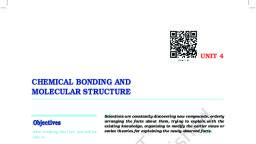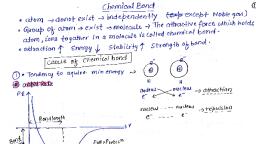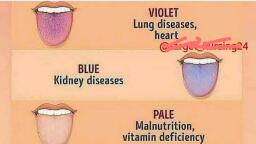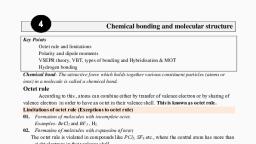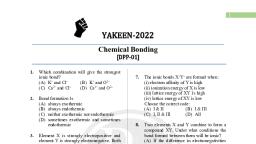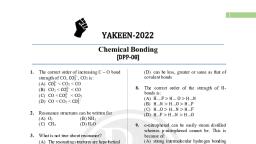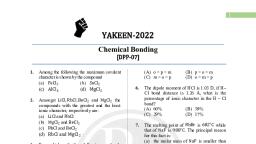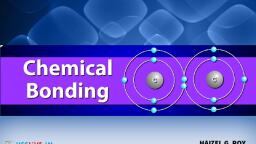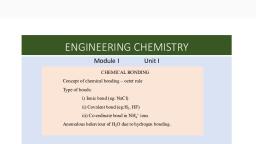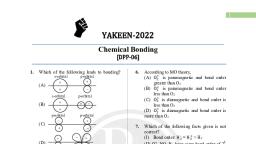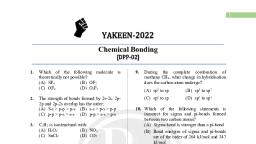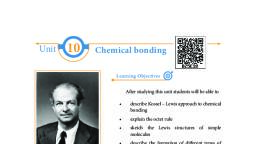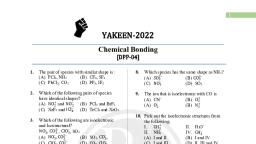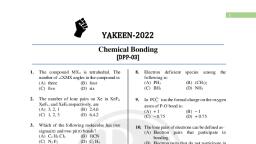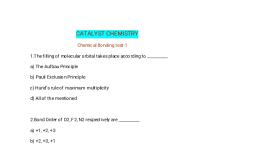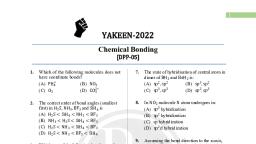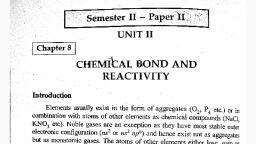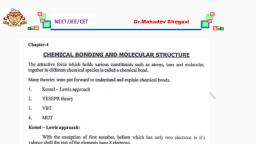Page 1 :
, , , , , , , CHAPTER, , Chemical Bonding and, Molecular Structure, , 4, , 4.1, 1., , 2., , 3., , Kössel-Lewis Approach to Chemical, Bonding, , In PO 43– ion, the formal charge on each oxygen atom, and P—O bond order respectively are, (a) –0.75, 1.25, (b) –0.75, 1.0, (c) –0.75, 0.6, (d) –3, 1.25, (1998), Among LiCl, BeCl2, BCl3 and CCl4, the covalent, bond character follows the order, (a) BeCl2 > BCl3 > CCl4 < LiCl, (b) BeCl2 < BCl3 < CCl4 < LiCl, (c) LiCl < BeCl2 < BCl3 < CCl4, (d) LiCl > BeCl2 > BCl3 > CCl4, (1990), Which one of the following formulae does not, correctly represent the bonding capacities of the two, atoms involved?, +, , H, , (a) H P, , H, , (b), , F, , F, O, , H, O, , (c), , (d), , H C C, , OH, , (1990), , 4.2, 4., , Among the following, which compound will show, the highest lattice energy?, (a) KF, (b) NaF, (c) CsF, (d) RbF, (1993), , 4.3, 5., , Ionic or Electrovalent Bond, , Bond Parameters, , Which of the following, set of molecules will have, zero dipole moment?, (a) Ammonia, beryllium difluoride, water,, 1, 4-dichlorobenzene, (b) Boron trifluoride, hydrogen fluoride, carbon, dioxide, 1, 3-dichlorobenzene, , 6., , 7., , (c) Nitrogen trifluoride, beryllium difluoride, water,, 1, 3-dichlorobenzene, (d) Boron trifluoride, beryllium difluoride, carbon, (NEET 2020), dioxide, 1, 4-dichlorobenzene, Which of the following is the correct order of dipole, moment ?, (a) NH3 < BF3 < NF3 < H2O, (b) BF3 < NF3 < NH3 < H2O, (c) BF3 < NH3 < NF3 < H2O, (d) H2O < NF3 < NH3 < BF3 (Odisha NEET 2019), The species, having bond angles of 120° is, (a) ClF3, (b) NCl3, (c) BCl3, (d) PH3, (NEET 2017), , 8., , Consider the molecules CH4, NH3 and H2O. Which, of the given statements is false?, (a) The H — O — H bond angle in H2O is smaller, than the H — N — H bond angle in NH3., (b) The H — C — H bond angle in CH4 is larger, than the H — N — H bond angle in NH3., (c) The H — C — H bond angle in CH4, the, H — N — H bond angle in NH3, and the, H — O — H bond angle in H2O are all greater, than 90°., (d) The H — O — H bond angle in H2O is larger, than the H — C — H bond angle in CH4., (NEET-I 2016), 9. Which of the following molecules has the maximum, dipole moment?, (a) CO2, (b) CH4, (c) NH3, (d) NF3, (2014), 10. The correct order of increasing bond length of, C – H, C – O, C – C and C C is, (a) C – H < C C < C – O < C – C, (b) C – C < C C < C – O < C – H, (c) C – O < C – H < C – C < C C, (d) C – H < C – O < C – C < C C, (2011), 11. Which of the following structures is the most, preferred and hence of lowest energy for SO3?
Page 2 :
23, , Chemical Bonding and Molecular Structure, :O:, , 18. H2O is dipolar, whereas BeF2 is not. It is because, (a) the electronegativity of F is greater than that, of O, (b) H2O involves hydrogen bonding whereas BeF2, is a discrete molecule, (c) H2O is linear and BeF2 is angular, (d) H2O is angular and BeF2 is linear., (2004), , :, , S, , (a), , (b), , S, :O:, , :, , :O:, , S, O: :O, O, , S, , (d), , O, , O, , :, , (c), , O, , O, , O, , O, , (Mains 2011), , 12. The correct order of increasing bond angles in the, following triatomic species is, (a) NO + < NO < NO – (b) NO + < NO – < NO, 2, , 2, , 2, , 2, , 2, , 2, , 2, , 2, , 2, , 2, , 2, , 2, , (c) NO – < NO + < NO (d) NO – < NO < NO +, , (2008), , 13. The correct order of C – O bond length among CO,, CO 32–, CO2 is, 2–, , 19. Which of the following molecules does not possess, a permanent dipole moment?, (b) SO3, (a) CS2, (c) H2S, (d) SO2, (1994), 20. The table shown below gives the bond dissociation, energies (Ediss) for single covalent bonds of carbon, (C) atoms with element A, B, C and D. Which, element has the smallest atoms?, , 2–, , Bond, , E diss(kJ mol–1), , C-A, , 240, , (2007), , C-B, , 328, , 14. The electronegativity difference between N and F is, greater than that between N and H yet the dipole, moment of NH3 (1.5 D) is larger than that of NF 3, (0.2 D). This is because, (a) in NH3 the atomic dipole and bond dipole are in, the opposite directions whereas in NF3 these are, in the same direction, (b) in NH3 as well as in NF3 the atomic dipole and, bond dipole are in the same direction, (c) in NH3 the atomic dipole and bond dipole are in, the same direction whereas in NF3 these are in, opposite directions, (d) in NH3 as well as in NF3 the atomic dipole and, bond dipole are in opposite directions. (2006), , C-C, , 276, , C-D, , 485, , (a) CO < CO3 < CO2 (b) CO3 < CO2 < CO, (c) CO < CO 2 < CO 2– (d) CO < CO 2– < CO, 3, , 2, , 3, , 15. The correct order in which the O – O bond length, increases in the following is, (a) O 2 < H2O2 < O3, (b) O 3 < H 2O2 < O2, (d) O 2 < O 3 < H2O2, (c) H2O2 < O2 < O3, (2005, 1995), 16. The correct sequence of increasing covalent, character is represented by, (a) LiCl < NaCl < BeCl2, (b) BeCl2 < LiCl < NaCl, (c) NaCl < LiCl < BeCl2, (d) BeCl2 < NaCl < LiCl, (2005), 17. Which of the following would have a permanent, dipole moment?, (a) SiF4, (b) SF4, (c) XeF4, (d) BF3, (2005), , (a) C, (c) A, , (b) D, (d) B, , (1994), , 21. Strongest bond is in between, (a) CsF, (b) NaCl, (c) both (a) and (b), (d) none of the above., (1993), 22. Which of the following bonds will be most polar?, (a) N – Cl, (b) O – F, (c) N – F, (d) N – N, (1992), , 4.4, , The Valence Shell Electron Pair, Repulsion (VSEPR) Theory, , 23. In the structure of ClF3, the number of lone pairs of, electrons on central atom ‘Cl’ is, (a) one, (b) two, (c) four, (d) three, (NEET 2018), 24. Predict the correct order among the following :, (a) bond pair - bond pair > lone pair - bond pair, > lone pair - lone pair, (b) lone pair - bond pair > bond pair - bond pair, > lone pair - lone pair, (c) lone pair - lone pair > lone pair - bond pair, > bond pair - bond pair, (d) lone pair - lone pair > bond pair - bond pair, > lone pair - bond pair, (NEET-I 2016)
Page 3 :
24, , 25. Which of the following species contains three bond, pairs and one lone pair around the central atom?, (a) H2O, (b) BF 3, (2012), (c) NH –, (d) PCl, 2, , 3, , 26. Which of the following is not a correct statement?, (a) Multiple bonds are always shorter than, corresponding single bonds., (b) The electron-deficient molecules can act as, Lewis acids., (c) The canonical structures have no real existence., (d) Every AB5 molecule does in fact have square, pyramid structure., (2006), 27. Which of the following is not isostructural with, SiCl4? +, (b) SCl, (a) NH, 4, , (c) SO 2–, 4, , 4, , (d) PO 3–, 4, , (2006), , 28. In which of the following molecules all the bonds, are not equal?, (a) NF3, (b) ClF3, (c) BF3, (d) AlF3, (2006), 29. Which of the following molecules has trigonal, planar geometry?, (a) BF3, (b) NH3, (c) PCl3, (d) IF3, (2005), 30. In a regular octahedral molecule, MX6 the number, of X – M – X bonds at 180° is, (a) three, (b) two, (2004), (c) six, (d) four., 31. In BrF3 molecule, the lone pairs occupy equatorial, positions to minimize, (a) lone pair - bond pair repulsion only, (b) bond pair - bond pair repulsion only, (c) lone pair - lone pair repulsion and lone pair bond pair repulsion, (d) lone pair - lone pair repulsion only., (2004), –, 32. In NO 3 ion, number of bond pair and lone pair of, electrons on nitrogen atom are, (a) 2, 2, (b) 3, 1, (c) 1, 3, (d) 4, 0., (2002), 33. In which of the following bond angle, is maximum?, (a) NH 3, (b) NH+, 4, , (c) PCl3, , 35. In compound X, all the bond angles are exactly, 109°28, X is, (a) chloromethane, (b) carbon tetrachloride, (c) iodoform, (d) chloroform., (1991), , (d) SCl2, , (2001), , 34. The BCl3 is a planar molecule whereas NCl3 is, pyramidal because, (a) nitrogen atom is smaller than boron atom, (b) BCl3 has no lone pair but NCl3 has a lone pair of, electrons, (c) B—Cl bond is more polar than N—Cl bond, (d) N—Cl bond is more covalent than B—Cl bond., (1995), , 4.5, , Valence Bond Theory, , 36. Which of the following species contains equal, number of and -bonds?, (b) XeO, (CH),2(CN) 2, (a), (c) (CN), HCO–2, (d), 3, , 4, , (2015, Cancelled), 37. Which one of the following molecules contains no , bond?, (a) SO2, (b) NO2, (c) CO2, (d) H2O, (NEET 2013), 38. Which one of the following statements is not correct, for sigma- and pi- bonds formed between two, carbon atoms?, (a) Sigma-bond is stronger than a pi-bond., (b) Bond energies of sigma- and pi-bonds are of the, order of 264 kJ/mol and 347 kJ/mol, respectively., (c) Free rotation of atoms about a sigma-bond is, allowed but not in case of a pi-bond., (d) Sigma-bond determines the direction between, carbon atoms but a pi-bond has no primary, effect in this regard., (2003), 39. Main axis of a diatomic molecule is z, molecular, orbital px and py overlap to form which of the, following orbitals?, (a) molecular orbital, (b) molecular orbital, (c) molecular orbital, (d) No bond will form., (2001), 40. Which statement is not correct?, (a) A sigma bond is weaker than a pi bond., (b) A sigma bond is stronger than a pi bond., (c) A double bond is stronger than a single bond., (d) A double bond is shorter than a single bond., (1990), 41. Linear combination of two hybridized orbitals, belonging to two atoms and each having one, electron leads to the formation of, (a) sigma bond, (b) double bond, (c) co-ordinate covalent bond, (d) pi bond., , (1990), , 42. Which of the following does not apply to metallic, bond?, (a) Overlapping valence orbitals, (b) Mobile valence electrons
Page 4 :
25, , Chemical Bonding and Molecular Structure, (c) Delocalized electrons, (d) Highly directed bonds, , (1989), , (b) NO 3–, (d) CO, , (a) N3 –, (c) NO, 2, , 43. The angle between the overlapping of one s-orbital, and one p-orbital is, (a) 180°, (b) 120°, (1988), (c) 109°28, (d) 120°, 60°, , 4.6, , Hybridisation, , 44. Which of the following pairs of compounds is, isoelectronic and isostructural? –, (a) TeI2, XeF2, (b) IBr , XeF2, 2, (c) IF , XeF, (d) BeCl2, XeF2, 3, 2, (NEET 2017), 45. The hybridizations of atomic orbitals of nitrogen in, NO+2, NO–3 and NH+4 respectively are, (a) sp, sp3 and sp2, (b) sp2, sp3 and sp, 2, 3, (c) sp, sp and sp, (d) sp2, sp and sp3, (NEET-II 2016), 46. Which of the following pairs of ions is isoelectronic, and isostructural?, (b) ClO – , CO 2–, (a) CO 2–, NO –, 3, , 3, , (c) SO2– , NO –, 3, , 3, , 3, , 3, , 3, , 52. XeF2 is isostructural with, (b) BaCl2, (a) SbCl3, (c) TeF2, (d) ICl2–, , (NEET-II 2016), 47. The correct geometry and hybridization for XeF 4 are, (a) octahedral, sp3d2, , 54. The outer orbitals of C in ethene molecule can be, considered to be hybridized to give three equivalent, sp2 orbitals. The total number of sigma () and pi, () bonds in ethene molecule is, (a) 3 sigma () and 2 pi () bonds, (b) 4 sigma () and 1 pi () bonds, (c) 5 sigma () and 1 pi () bonds, (d) 1 sigma () and 2 pi () bonds., (Karnataka NEET 2013), 55. In which of the following pairs both the species have, sp3 hybridization?, (a) SiF4, BeH2, (b) NF3, H2O, (c) NF3, BF3, (d) H2S, BF3, , (b) trigonal bipyramidal, sp d, (c) planar triangle, sp3d3, (d) square planar, sp3d2., , (Karnataka NEET 2013), 56. Which one of the following pairs is isostructural, (i.e., having the same shape and hybridization)?, (a) [BCl3 and BrCl3], (b) [NH3 and NO–], 3, , –, , (c) [NF3 and BF3], , 3, , (NEET 2013), , 53. Which of the following is a polar molecule?, (a) SiF4, (b) XeF4, (c) BF3, (d) SF4, (NEET 2013), , (d) ClO –, SO2–, , 3, , (2014), , 2, , (d) [BF4 and NH +4], (2012), , (NEET-II 2016), , 48. Among the following, which one is a wrong, statement?, (a) PH5 and BiCl5 do not exist., (b) p-d bonds are present in SO2., (c) SeF4 and CH4 have same shape., (d) I + has bent geometry., (NEET-II 2016), 3, , 49. In which of the following pairs, both the species are, not isostructural?, (a) Diamond, Silicon carbide, (b) NH 3, PH3, (c) XeF4, XeO4, (d) SiCl4, PCl4+, (2015), 50. Maximum bond angle at nitrogen is present in, which of the following?, (a) NO2+, (b) NO3–, (c) NO2, (d) NO 2–, (2015, Cancelled), 51. Which one of the following species has planar, triangular shape?, , 57. Which of the two ions from the list given below that, have the geometry that is explained, by the same, hybridization of orbitals, NO –, NO –, NH –, NH +,, 2, 3, 2, 4, SCN– ?, –, –, +, –, (a) NO and NO, (b) NH and NO, 2, , 3, , (c) SCN– and NH 2–, , 4, , 3, , 2, , 2, , (d) NO – and NH – (2011), , 58. In which of the following pairs of molecules/ions,, the central, atoms have sp2 hybridisation? –, (a) NO2– and NH3, (b) BF3and NO 2, (c) NH – and H O, (d) BF and NH – (2010), 2, , 2, , 3, , 2, , 59. In which one of the following species the central, atom has the type of hybridization which is not the, same as that present in the other, three?, (b) I –, (a) SF4, 3, (2010), (d) PCl5, 60. In which of the following molecules the central, atom does not have sp3 hybridization?, (a) CH–4, (b) SF4 +, (c) BF, (d) NH, (Mains 2010), , (c) SbCl52–, , 4, , 4
Page 5 :
26, , 61. Some of the properties of the two species, NO3– and, H3O+ are described below. Which one of them is, correct?, (a) Dissimilar in hybridization for the central atom, with different structures., (b) Isostructural with same hybridization for the, central atom., (c) Isostructural with different hybridization for, the central atom., (d) Similar in hybridization for the central atom, with different structures., (Mains 2010), 62. In which of the following molecules/ions BF3, NO2–,, NH 2– and H 2O, the central atom is sp2 hybridised?, –, –, (a) NH 2 and H2O, (b) NO 2 and H2O, (c) BF 3 and NO2–, , (d) NO –2 and NH 2– (2009), , 63. In which of the following pairs, the two species are, isostructural?, (a) SO 2– and NO –, (b) BF and NF, 3, , (c), , –, BrO3, , 3, , and XeO3, , 3, , 3, , (d) SF4 and XeF4, , (2007), , 64. Which of the following species has a linear shape?, (b) NO –2, (a) O3, (c) SO2, (d) NO2+, (2006), 65. The correct order regarding the electronegativity of, hybrid orbitals of carbon is, (b) sp > sp2 < sp3, (a) sp < sp2 < sp3, (c) sp > sp2 > sp3, , (d) sp < sp2 > sp3, , (2006), , 66. Among the following, the pair in which the two, species are not isostructural is, (a) SiF4 and SF4, (b) IO 3– and XeO3, –, +, (c) BH and NH, (d) PF – and SF . (2004), 4, , 4, , 6, , (d) CO 2–, , 3, , (2002), , 3, , 2, , (c) CO3 , SO3, , 2–, , 73. Which structure is linear?, (a) SO2, (b) CO2, (c) CO 2–, (d) SO 2–, 3, , 3, , (1992), , 4, , 74. A sp3 hybrid orbital contains, (a) 1/4 s-character, (b) 1/2 s-character, (c) 1/3 s-character, , (d) 2/3 s-character., , 75. The complex ion [Co(NH3)6], , 3+, , (1991), 32, , is formed by sp d, , hybridisation. Hence the ion should possess, (a) octahedral geometry, (b) tetrahedral geometry, (c) square planar geometry, (d) tetragonal geometry., (1990), 76. Which of the following molecules does not have a, linear arrangement of atoms?, (b) C2H2, (a) H2S, (c) BeH2, (d) CO2, (1989), 77. In which one of the following molecules the central, atom can be said to adopt sp2 hybridization?, (a) BeF2, (b) BF3, (1989), (c) C H, (d) NH, 2, , 2, , 78. Equilateral shape has, (a) sp3hybridisation, (c) sp hybridisation, , 3, , (b) sp2 hybridisation, (d) dsp3 hybridisation., (1988), , 68. Which of the following two are isostructural?, (a) XeF2, IF –, (b) NH , BF, 2–, , 72. Which one of the following has the shortest carbon, carbon bond length?, (a) Benzene, (b) Ethene, (c) Ethyne, (d) Ethane, (1992), , 6, , 67. Which of the following has p – d bonding?, (b) SO 32–, (a) NO3–, (c) BO 3–, , 71. When the hybridization state of carbon atom, changes from sp3 to sp2 and finally to sp, the angle, between the hybridized orbitals, (a) decreases gradually, (b) decreases considerably, (c) is not affected, (d) increases progressively., (1993), , 3, , (d) PCl5, ICl5, , (2001), , 69. The bond length between hybridised carbon atom, and other carbon atom is minimum in, (a) propene, (b) propyne, (d) butane., (1996), (c) propane, 70. Which of the following has sp2-hybridisation?, (a) BeCl2, (b) C2H2, (c) C2H6, (d) C2H4, (1996), , 4.7, , Molecular Orbital Theory, , 79. Consider the following species : CN+, CN –, NO and, CN. Which one of these will have the highest bond, order?, (a) NO, (c) CN+, , (b) CN–, (d) CN, , (NEET 2018), , 80. Which one of the following pairs of species have the, same bond order?, (a) O2, NO+, (b) CN–, CO, –, (c) N2, O2, (d) CO, NO (NEET 2017)
Page 6 :
27, , Chemical Bonding and Molecular Structure, 81. Which of the following is paramagnetic?, (b) NO+, (a) CN –, (c) CO, (d) O 2–, (NEET 2013), 82. The pair of species that has the same bond order in, the following is, (a) CO, NO+, (b) NO –, CN –, (d) O2, B2, (c) O2, N2, (Karnataka NEET 2013), 83. In which of the following ionization processes the, bond energy increases and the magnetic behaviour, changes from paramagnetic to diamagnetic?, (a) O O +, (b) C C +, 2, , 2, , (c) NO NO, , +, , 2, , 2, N2 N2+, , (d), (Karnataka NEET 2013), , 84. The pair of species with the same bond order is, (a) O 2–, B, (b) O +, NO +, 2, , 2, , 2, , which one of the following orbitals?, (a) * orbital, (b) orbital, (c) * orbital, , (d) orbital (Mains 2012), , (c) C 2– < He + < O – < NO, 2 +, 2, 2, (d) He2 < O – < NO < C2–, 2, , (Mains 2012, 2008), , 2, , 87. Which of the following is isoelectronic?, (a) CO 2, NO2, (b) NO –2, CO2, (c) CN–, CO, (d) SO2, CO2, (2002), 88. Which species does not exhibit paramagnetism?, –, , +, , (b) O2, (d) NO, , (2000), , (1998), , (d) 4, , 90. Which of the following species is paramagnetic?, (a) CO, (b) CN–, (c) O 2–, (d) NO, (1995), 2, , Bonding in Some Homonuclear, Diatomic Molecules, , 91. Identify a molecule which does not exist., (a) He, (b) Li, (NEET 2020), (c) C 2, (d) O 2, 2, , 2, , 2, , 2, , 2, , 2, , 2, , 2, , 2, , 2, , (c) O – > O2– > O + > O, 2, , 2, , (d) O + > O > O – > O2–, 2, , (2015), , 2, , 95. The correct bond order in the following species is, (b) O –2 < O2+ < O 22+, (a) O + < O – < O 2+, 22+, 2+, 2–, (c) O < O < O, (d) O 2+ < O – < O +, 2, , 2, , 2, , 2, , 2, , (2015, Cancelled), 96. Bond order of 1.5 is shown by, (a) O2+, (b) O–2, (c) O22–, (d) O2, (2012), 97. Which of the following has the minimum bond, length?, +, –, (a) O2, (b) O2, (c) O22–, (d) O2, (2011), 98. The pairs of species of oxygen and their magnetic, behaviour are noted below. Which of the following, presents the correct description?, (a) O2– , O22– - Both diamagnetic, (b) O +, O 2– - Both paramagnetic, 2, , 89. The number of anti-bonding electron pairs in O22–, molecular ion on the basis of molecular orbital, theory is (Atomic number of O is 8.), (a) 3, (b) 2, , 4.8, , 2, , (a) O22–> O2 >– O2 > O2 +, (b) O > O+ > O2– > O –, , 2, , 86. Four diatomic species are listed below. Identify the, correct order in which the bond order is increasing, in them., (a) NO < O – < C 2– < He +, 2, 2, 2, (b) O2– < NO < C22– < He2+, , (c) 5, , 93. Which of the following is paramagnetic?, (a) N2, (b) H2, (c) Li2, (d) O2, (Odisha NEET 2019), 94. Decreasing, order, of, stability, of, O2, O – , O2 + and, 2, 2–, O is, , 2, , (c) NO, CO, (d) N2, O2, (2012), 85. During change of O2 to O – ion, the electron adds on, , (a) N2, (c) CO, , 92. Which of the following diatomic molecular species, has only bonds according to Molecular Orbital, Theory?, (b) O2, (a) Be2, (c) N2, (d) C2, (NEET 2019), , (c), , +, O2 ,, , O2 - Both paramagnetic, , (d) O, O22– - Both paramagnetic, , (2011), , 99. Which one of the following species does not exist, under normal, conditions?, (b) Be, (a) Be+, 2, , (c) B2, , 2, , (d) Li2, , (2010), , 100. According to MO theory which of the lists ranks the, nitrogen, species, in terms of increasing, bond, order?, 2–, –, 2–, –, (a) N2 < N2 < N2, (b) N2 < N2 < N2, (c) N – < N 2– < N, (d) N – < N < N 2–, 2, 2, 2, 2, 2, 2, (2009), +, 101. Right order of dissociation energy N2 and N2 is, (a) N > N +, (b) N = N+, 2, 2, 2, 2, (2000), +, (c) N 2 > N2, (d) none.
Page 7 :
28, 102. N2 and O2 are converted into monocations, N + and, 2, O+2 respectively. Which is wrong?, , (a) H2O2, (b) HCN, (c) Cellulose, , +, , (a) In+O 2 paramagnetism decreases., (b) N becomes diamagnetic., , (NEET-II 2016), , (d) Concentrated acetic acid, , 2, , (c) In N+ 2 , the N–N bond weakens., (d) In O+2, the O–O bond order increases. (1997), 103. N2– and O2 are converted into monoanions N2– and, O2 respectively, which of the following statements is, wrong?, (a) In–O–2, bond length increases., (b) N2 becomes diamagnetic., (c) In N –2 , N–N bond weakens., (d) In O–2, the O–O bond order decreases. (1997), 104. The ground state electronic configuration of valence, shell electrons in nitrogen molecule (N2) is written, as KK, 2s2, *2s2, 2p 2 = 2p 22p 2. Hence the, x, , y, , z, , bond order in nitrogen molecule is, (a) 2, (b) 3, (c) 0, (d) 1, , (c), , 4.9, , 2, , O2+, , (d) O22–, , (b) Covalent bonds, (c), London dispersion, (d) Hydrogen, bondingforce, , (c) in both electron density will decrease, (d) on X electron density will decrease and on H, increases., (2001), 109. Strongest hydrogen bond is shown by, (a) water, (b) ammonia, (c) hydrogen fluoride, (d) hydrogen sulphide., , (1994), , Hydrogen Bonding, , 106. Which one of the following compounds shows the, presence of intramolecular hydrogen bond?, , (2009), , 108. In X – H, Y, X and Y both are electronegative, elements. Then, (a) electron density on X will increase and on H, will decrease, (b) in both electron density will increase, , (1995), , 105. Which of the following molecules has the highest, bond order?, (a) O –, (b) O, 2, , 107. What is the dominant intermolecular force or bond, that must be overcome in converting liquid CH3OH, to, gas?, (a)aDipole-dipole, interaction, , (1992), , 110. Which one shows maximum hydrogen bonding?, (a) H2O, (b) H2Se, (c) H2S, (d) HF, (1990), , ANSWER KEY, , 1., 11., 21., 31., 41., 50., 60., 70., 80., 90., 100., 110., , (a), (d), (a), (d), (a), (a), (b), (d), (b), (d), (a), (a), , 2., 12., 22., 32., 42., 51., 61., 71., 81., 91., 101., , (c), (d), (c), (d), (d), (b), (a), (d), (d), (a), (a), , 3., 13., 23., 33., 43., 52., 62., 72., 82., 92., 102., , (d), (c), (b), (b), (a), (d), (c), (c), (a), (d), (b), , 4., 14., 24., 34., 44., 53., 63., 73., 83., 93., 103., , (b) 5., (c) 15., (c) 25., (b) 35., (None), (d) 54., (c) 64., (b) 74., (c) 84., (d) 94., (b) 104., , (d), (d), (d), (b), (c), (d), (a), (a), (d), (b), , 6., 16., 26., 36., 45., 55., 65., 75., 85., 95., 105., , (b), (c), (d), (d), (c), (b), (c), (a), (a), (b), (c), , 7., 17., 27., 37., 46., 56., 66., 76., 86., 96., 106., , (c), (b), (b), (d), (a,d), (d), (a), (a), (d), (b), (c), , 8., 18., 28., 38., 47., 57., 67., 77., 87., 97., 107., , (d), (d), (b), (b), (a), (a), (b), (b), (c), (a), (d), , 9., 19., 29., 39., 48., 58., 68., 78., 88., 98., 108., , (c), (a), (a), (a), (c), (b), (a), (b), (c), (c), (a), , 10., 20., 30., 40., 49., 59., 69., 79., 89., 99., 109., , (a), (b), (a), (a), (c), (c), (b), (b), (d), (b), (c)
Page 8 :
29, , Chemical Bonding and Molecular Structure, , Hints & Explanations, 1. (a) : The total charge = –3, So, the average formal charge on each ‘O’ atom is –3/4, = –0.75, O–, O, O–, O–, –, , P, , P, , –, , O O– O, , O, , –, , P, , –, , –O, , O, , –, , O, , –, , 7. (c) : BCl3-Trigonal planar, sp2-hybridised, 120°, angle., H, 8., , (d) :, , P, , O O–, , O, O, Average P—O bond order, 5, Total no. of bonds, 1.25, , Total no. of resonating structures 4, , H, , O, , 109°28, , C, , N, H, , HH, , O, , 107°, , H, , H, , H, , 104.5°, , H, , H, , 9., , (c) : O, , C, , C, , O ;, , ( = 0, symmetrical), , 2. (c) : Along the period, as we move from, Li Be B C, the electronegativity increases, and hence the EN difference between the element and, Cl decreases and accordingly, the covalent character, increases. Thus LiCl < BeCl2 < BCl3 < CCl4 is the correct, order of covalent bond character., , H, , H, , H, , ( = 0, symmetrical), , N, , N, , H, , H, , F, , H, , F, , F, , ( 0, pyramidal), , ( 0, pyramidal), , The asterisk (*) marked carbon has a valency of 5 and, hence, this formula is not correct because carbon has a, maximum valency of 4., 4. (b) : For compounds containing ions of same charge,, lattice energy increases as the size of ions decreases. Thus,, NaF has highest lattice energy., F, , In NH3, H is less electronegative than N and hence, dipole moment of each N—H bond is towards N and, create high net dipole moment whereas in NF3, F is more, electronegative than N, the dipole moment of each N—F, bond is opposite to that of lone pair, hence reducing the, net dipole moment., 10. (a) : Increasing order of bond length is, C— H < C C < C—O < C— C, O, , 5., , 11. (d) :, , 3., , O, C* O, , (d) : H C, , (d) : F, , B, , H, , F, F, , Boron trifluoride, ( = 0), , Be, , F, , Beryllium difluoride, ( = 0), , Cl, O, , C, , , , S has maximum number of covalent, OO, bonds involving p – d bonding also., , 12. (d) : Structures of NO–,2 NO2 and NO+2 is given as, , O, , Carbon dioxide, ( = 0), , –, , 13. (c) : CO . C, , O–, , CO2 . O, 1.85 D, , .C, , O, , O, , O, , C, , C, , C, , O– O–, C, , O., , O, , O, +, , .O, , O., , –, O, –, O.., , C, , .., , CO 32– , , +, , O., , ., , (b) :, , ., , 6., , The correct order of increasing bond angles in the, following triatomic species is, NO2– < NO 2 < NO2 +, , .O, , C, , –., , .., , Cl, 1, 4-Dichlorobenzene, ( = 0), , +, , ., , O
Page 9 :
30, , More single bond character in resonance hybrid, more, is the bond length. Hence, the increasing bond length is, CO < CO2 < CO32–, 14. (c) : The dipole moment of NF3 is 0.24 D and, of NH3 is 1.48 D. The difference is due to fact that the, dipole moment due to N – F bonds in NF3 are in opposite, directions to the direction of the dipole moment of the, lone pair on N atom which partly cancel out. The dipole, moment of N – H bonds in NH3 are in the same direction, of the dipole moment of the lone pair on N atom which, adds up as shown :, .., , .., , N, , N, F, , F, , F, NF3, , H, , H, , H, NH3, , 15. (d) : Bond lengths of O – O in O2 is 1.21 Å, in H2O2, is 1.48 Å and in O3 is 1.28 Å. Therefore, correct order of, the O – O bond length is H2O2 > O3 > O2., 16. (c) : Covalent character in a compound is found by, Fajan’s rule., Fajan’s rule : The smaller the size of the cation and the, larger the size of the anion, the greater is the covalent, character of an ionic bond. The greater the charge on the, cation, the greater is the covalent character of the ionic, bond., 17. (b) : For dipole moment, we have to know the, hybridisation and shape., , O, Be, , F, H, , ≠0, , H, , F, , =0, , 19. (a) : The structure of CS2 is linear and therefore, it does not have permanent dipole moment. It is, represented as S C S., 20. (b) : Smaller the atom, stronger is the bond and, greater is the bond dissociation energy. Therefore, the, bond C-D has the greatest energy or D has smallest, atoms., 21. (a) : According to Fajans rule, ionic character, increases with increase in size of the cation,, (Cs > Rb > K > Na) and with decrease in size of the anion, (F > Cl > Br > I). Thus, CsF has higher ionic character, than NaCl and hence, bond in CsF is stronger than in, NaCl., 22. (c) : Polarity of the bond depends upon the, electronegativity difference of the two atoms forming the, bond. Greater the electronegativity difference, more is, the polarity of the bond., N – Cl, O–F N–F, N–N, 3.04–3.16 3.5–4.0 3.04–4.0 3.04–3.04, 23. (b) : The structure of ClF3 is, F, Cl, , F, , F, Hence, Cl has 2 lone pairs of electrons., 24. (c) : According to VSEPR theory, the repulsive, forces between lone pair and lone pair are greater than, between lone pair and bond pair which are further, greater than bond pair and bond pair., 25. (d) :, , F, , 2 bond pairs, 2 lone pairs, , B, , F, , 3 bond pairs, 0 lone pair, , F, N, 18. (d) : The overall value of the dipole moment of a, polar molecule depends on its geometry and shape, i.e., vectorial addition of dipole moment of the constituent, bonds. Water has angular structure with bond angle 105°,, it has dipole moment. However BeF2 is a linear molecule, thus, dipole moment summation of all the bonds present, in the molecule cancel each other., , H, , H, , P, Cl, , Cl, , 2 bond pairs, 2 lone pairs, , Cl 3 bond pairs, 1 lone pair, , 26. (d) : For AB5 molecules, there are three possible, geometries i.e. planar pentagonal, square pyramidal and, trigonal bipyramidal.
Page 10 :
31, , Chemical Bonding and Molecular Structure, B, , B, , 72°, , B, , B B, , A, , B, , A, B, , B, , B, , B, , B, , 90°, , 90°, , A, , B, , B, , B, , planar pentagonal square pyramidal, , B, 120°, , –, , 32. (d) : N O, , 4, , 4, , O, , O, , trigonal bipyramidal, , Out of these three geometries, it is only trigonal, bipyramidal shape in which bond pair-bond pair, repulsions are minimum and hence, this geometry is the, most probable geometry of AB5 molecule., 27. (b) : SiCl4, NH+, SO2– and PO 3– ions are the, 4, , Bent T-shaped geometry in which both lone pairs occupy, the equatorial positions of the trigonal bipyramid. Here, (lp - lp) repulsion = 0, (lp - bp) repulsion = 4 and (bp - bp), repulsion = 2., , NO 3–, , In, ion, nitrogen has 4 bond pairs of electrons and, no lone pair of electrons., +, 33. (b) : Bond angle is maximum in NH4, molecule with bond angle 109°., , tetrahedral, , 34. (b) : There is no lone pair on boron in BCl 3 hence,, no repulsion takes place. There is a lone pair on nitrogen, , examples of molecules/ions which are of AB4 type and, have tetrahedral structures. SCl 4 is AB4 (lone pair) type, species. Although the arrangement of five sp3d hybrid, orbitals in space is trigonal bipyramidal, due to the, presence of one lone pair of electrons in the basal hybrid, orbital, the shape of AB4 (lone pair) species gets distorted, and becomes distorted tetrahedral or see-saw., , in NCl3 hence, repulsion takes place. Therefore, BCl3 is, planar molecule but NCl 3 is pyramidal molecule., 35. (b) : As all C – Cl bonds are directed towards the, corner of a regular tetrahedron., 36. (d) : (CN)2, N C — C N (3 + 4 ), , 28. (b) : The Cl – F (Cl – Feq) bond length is equal to, 1.60 Å while each of the two axial Cl – F (Cl – Fa) bond, length is equal to 1.70 Å., , CH2(CN)2,, , (6 + 4 ), , HCO3– ,, , (4 + 1 ), , XeO4,, , (4 + 4 ), , 29. (a) :, F, , F, , ··, , B, , N, H, , H, , F, trigonal planar, , H, pyramidal, O , 37. (d) : H, H, 38. (b) : Sigma bond dissociation energy = 347 kJ/mol, Pi-bond dissociation energy = 264 kJ/mol, 39. (a) : For overlap, the lobes of the atomic orbitals, are perpendicular to the line joining the nuclei., , 30. (a) : In octahedral molecule, six hybrid orbitals, directed towards the corners, X, 90°, of a regular octahedron with a, X, bond angle of 90°., X, According to this geometry, 90°, M, the number of X – M – X X, X, bonds at 180° must be three., X, F, , 40. (a) : A -bond is stronger than a -bond., 41. (a), , 31. (d) :, , 43. (a) : The type of overlapping between s - and, p-orbitals occurs along internuclear axis and hence, the, angle is 180°., , F, Br, , F, , Hence, only sidewise overlapping takes place., , 42. (d) : Metallic bonds have electrostatic attractions on, all sides and hence, do not have directional characteristics.
Page 12 :
33, , Chemical Bonding and Molecular Structure, 58. (b) : The hybridisation of the central atom can be, calculated as, No. of electrons No. of monovalent 2, , , in valence shell atoms around, , , , 1, central atom, , H of atom, , 2, Charge on Charge on, , , , anion, , cation, , , , , , , 1, For BF ,, [(3) (3) (0) (0)], 3H, =2 3 sp2 hybridisation., 1, For NO– , H [(5) (0) (0) (1)], 2, 2, = 3 sp2 hybridisation., 59. (c) : Hybridisation of the central atom can be, calculated as:, No. of valence No. of monovalent , , , electrons in the atoms around, , , centralatom, atom, , H 1central, , 2, , Charge on Charge on, , , , cation, anion, , , , Applying this formula we find that all the given, species except [SbCl5]2– have central atom with sp3d, (corresponding to H = 5) hybridization. In [SbCl 5]2–, Sb, is sp3d2 hybridized., 60. (b) : For neutral molecules,, No. of electron pairs = No. of atoms bonded to it +, 1/2[Gp. no. of central atom – Valency of central atom], 1, For CH4, no. of e– pairs 4 [4 4], = 4 (sp3 hybridisation) 2, 1, –, For SF4, no. of e pairs 4 [6 4], 2, = 5 (sp3d hybridisation), For ions,, No. of electron pairs = No. of atoms bonded to it +, 1/2[Gp. no. of central atom – Valency of central atom ±, No. of electrons equals1to the units of charge], For BF –, no. of e– pairs 4 [3 4 1], 4, 2, = 4 +(sp3 hybridisation), 1, –, For NH , no. of e pairs 4 [5 4 1], 4, , 2, = 4 (sp3 hybridisation), 61. (a) : No. of electron pairs at the central atom, = No. of atoms bonded to it + 1/2[Group number of central, atom – Valency of the central atom ± No. of electrons, equals to the units of charge], –, No. of electron pairs at the central atom in NO3, 1, 3 [5 6 1] 3 (sp2 hybridisation)., 2, , No. of electron pairs at the central atom in, 1, H3O+ 3 [6 3 1] 4 (sp3 hybridisation)., 62. (c) : BF3 sp2, NO 2– sp2, NH2 – sp3, H2O sp3, 63. (c) : Hybridisation of Br in BrO– :, 3, , H = 1/2(7 + 0 – 0 + 1) = 4 i.e. sp3 hybridisation, Hybridisation of Xe in XeO3 :, 1, H (8 0 0 0) 4 i.e. sp3 hybridisation, 2, In both BrO3– and XeO3 , the central atom is sp3 hybridised, and contains one lone pair of electrons, hence in both the, cases, the structure is trigonal pyramidal., .., , .., Br, O, , O, , Xe, , O–, , O, , O, , O, , –, , XeO3, , BrO3, , 64. (d) : NO –2 : Due to sp2 hybridisation of, N, N-atom and the presence of one lone pair, O 115° O, –, on it, NO – has angular shape., 2, , O, , O3 : O, , 116.8° O, , V-shaped, , of one lone pair of electrons, SO : Due to the presence, 2, 2, in, one of the three sp -hybrid orbitals, SO2 molecule has, angular (V-shaped) structure., , S, O 119.5° O, , NO + : Due to sp hybridisation of N+, NO+ ion has linear, 2, , 2, , shape., , +, , O, , N, , O, , 65. (c) : Electronegativity of carbon atom is not, fixed. It varies with the state of hybridisation., Electronegativity of carbon increases as the scharacter of the hybrid orbital increases., C (sp) > C (sp2) > C (sp3), 66. (a) : SiF has symmetrical tetrahedral shape which, 4, , is due to, hybridisation of the central silicon atom., tetrahedral or see-saw geometry which, SF4 has distorted, 3, s, arises due to sp3d hybridisation of central sulphur atom, p, and due to the presence of one lone pair of electrons in, one of the equatorial hybrid orbital., 67. (b) : In sulphite ion, the central atom sulphur is sp3, hybridised., Electronic structure of S atom in excited state, 3p, 3d, 3s
Page 15 :
36, 95. (b) : O – < O +, 2, , B.O. :, , 1.5, , < O2+, , 2, , N 2– (16) : (1s)2 (*1s)2 (2s)2 (*2s)2 (2p )2 (2p )2, , 2, , 2.5, , B.O. , , 96. (b) : Configuration of O2 (16) :, 1s2 *1s2 2s2 *2s2 2p2 2p 2 2p 2 *2p 1 *2p1, z, , No. of e in, Bond order =, , x, , y, , x, , No. of e in, , 10 5, , 2, – 10, , Bond order of O2 , , Bond order of O 2– , , 2.5, , 2, 7, , 2, 10 8, , 10 6, 2, 2, , 2–, , 101. (a) : N2(14) : (1s)2, (*1s)2, (2s)2, (*2s)2, (2px)2, (2py)2, (2pz)2, N Na 10 4, In N2, bond order b, , 3, 2, 2, 94, In N+, bond order , 25, , 2, , 1.5, , 2, , 2 is more than N + so the, As the bond order in N, 2, 2, dissociation energy of N is higher than N+., , 1.0, , 2, 10 6, 2, Bond order of O2 , 2, 97. (a) : Electronic configuration, 2, , 2, , 2, , 2, , 2, , 1, , 1, , O2 : KK(2s) (*2s) (2pz) (2px) (2py) (*2px) (*2py), 1, Bond order = (8 4) 2, 2, O1: Bond order, 1+ = (8 3) 2, 2, 2, 2, 1, 1, O– : Bond order = 2 (8 5) 1, 2, , 2, , 1, , : Bond order = (8 6) 1, 2, As bond order increases, bond length decreases., O, , 2–, , –, , Hence, bond order increases as : N2 < N2 < N2, , 2, , 2, , y, , (2pz)2 (*2px)1 (*2py)1, , y, , , bonding M.O. antibonding M.O., , Bond order of O + , , x, , 2, , 3.0, , 2, , 98. (c) : O +2 and O2 are paramagnetic in nature as they, contain one and two unpaired electrons respectively., 99. (b) : Be2 does not exist., Be2 has an electronic configuration of :, 1s2 *1s2 2s2 *2s2, 44, Bond order =, 0, 2, Thus, Be2 does not exist., 100. (a) : According to MOT, the molecular orbital, electronic configuration of, N2 (14) : (1s)2 (*1s)2 (2s)2 (*2s)2(2px)2 (2py)2 (2pz)2, 10 4, B.O , 3, 2, 2 2, 2 1, N2– (15) : (1s)2 (*1s)2 (2s)2 (*2s) 2 (2p(, ) (, x ) p(2p, y )p ), 2 z, *2 x, 10 5, B.O , 2.5, 2, , 2, , 102. (b) : Diamagnetism is caused due to the absence of, unpaired electrons. But in N2 +, there is unpaired electron., So, it is paramagnetic., 103. (b) : N– becomes paramagnetic due to one unpaired, 2, , electron in *2px orbital., 104. (b) : Number of electrons in bonding orbitals, Nb = 10 and number of electrons in antibonding orbitals, Na = 4., Therefore bond order = 1/2(Nb – Na) = 1/2(10 – 4) = 3, 105. (c) : The bond order of O + = 2.5, O 2– = 1,, 2, O2– = 1.5 and that of O2 = 2. 2, 106. (c) : H2O2, HCN and conc. CH3COOH form, intermolecular hydrogen bonding while cellulose has, intramolecular hydrogen bonding., 107. (d) : Methanol can undergo intermolecular, association through H-bonding as the – OH group in, alcohols is highly polarised., CH3, , CH3, , CH3, , ---O—H---O—H---O—H---, , As a result, in order to convert liquid CH 3OH to gaseous, state, the strong hydrogen bonds must be broken., 108. (a) : –X — H+ . ......... Y, the electrons of the covalent, bond are shited towards the more electronegative atom., This partially positively charged H-atom forms hydrogen, bond with the other more electronegative atom., 109. (c) : H – F shows strongest H-bonds because, fluorine, electronegative., 110. (a) :isHmost, O shows, maximum H-bonding because, 2, , each H2O molecule is linked to four H2O molecules, through H-bonds.,

